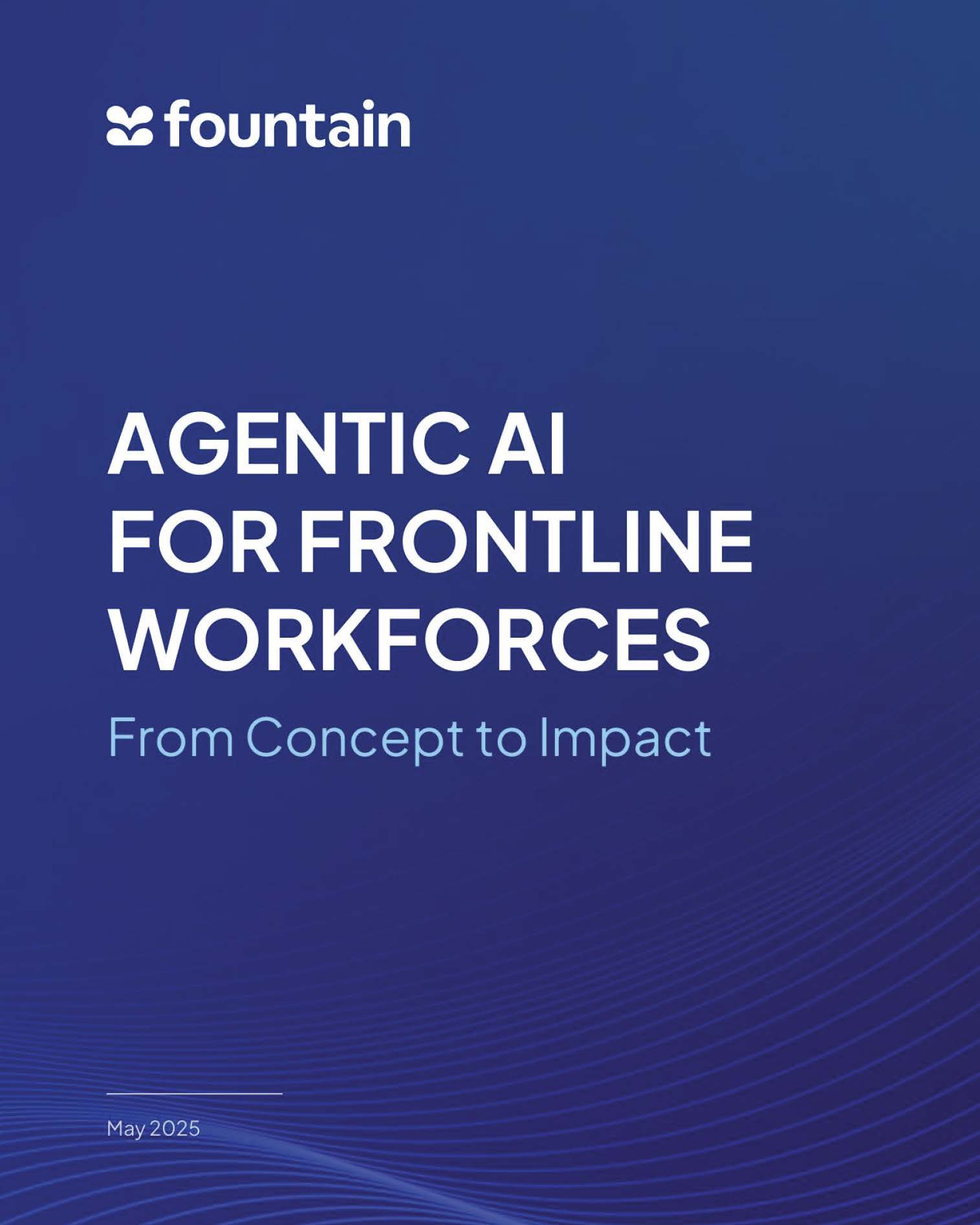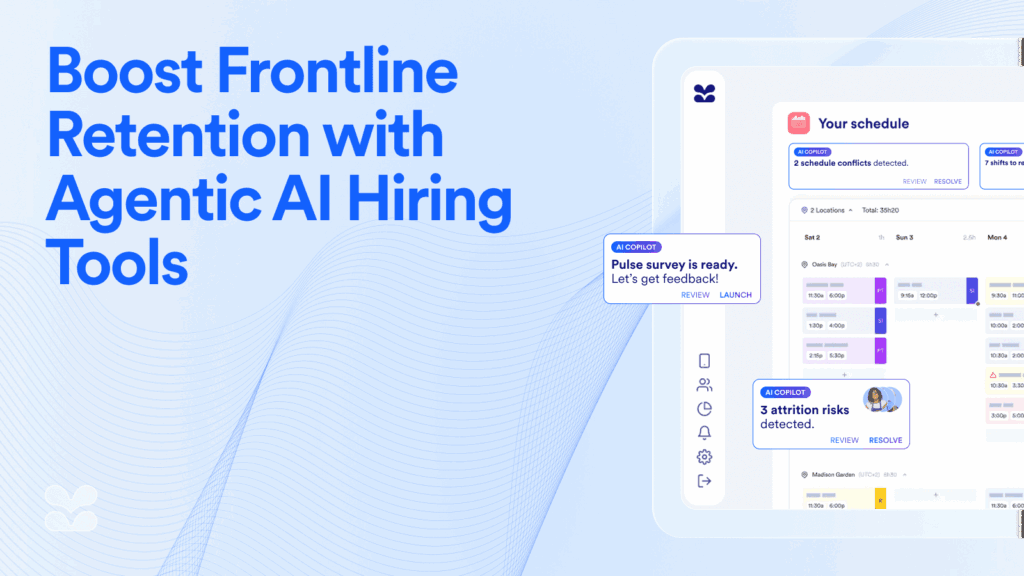
Frontline industries have consistently struggled with employee retention and high churn—and the challenge isn’t letting up. Some businesses report annual attrition rates exceeding 100%, meaning an entire frontline team might be replaced within a single year. It’s an expensive, unsustainable cycle that’s hard to break.
The consequences go far beyond morale. Constant departures erode productivity, strain teams, and drive up recruitment costs. Replacing just one frontline worker can cost a business 6–9 months’ worth of that employee’s salary in hiring and training expenses.
To break the cycle, leading employers are embracing a smarter solution: Agentic AI—an autonomous, context-aware, and action-oriented approach that helps them move faster in hiring while keeping their workforce engaged and intact longer.
In this post, we explore how AI for frontline hiring and retention is driving real results and what HR leaders can do to capitalize on these employee retention tools in the next 90 days.
The Frontline Retention Challenge in 2025
Why do so many frontline employees quit—and why does it so often come as a surprise?
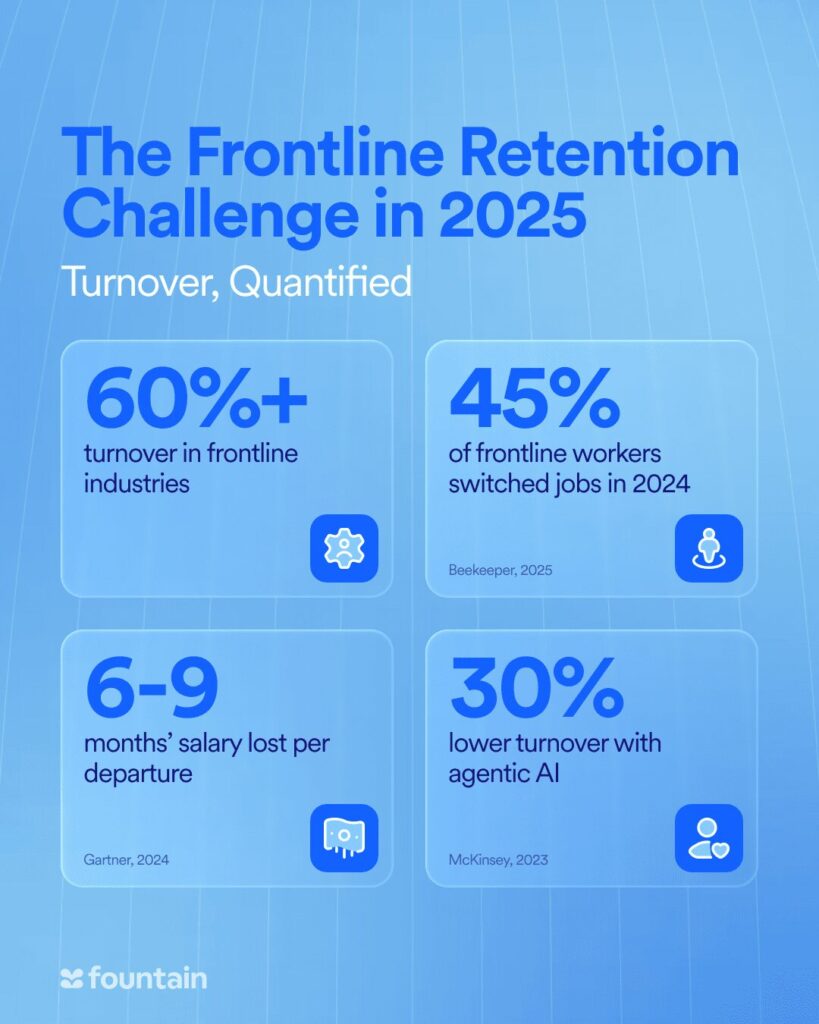
Disengagement and burnout typically build up quietly, long before anyone notices. And by the time a manager realizes something’s wrong, it’s usually too late.
According to Gallup, global employee engagement is just 23%, meaning nearly 8 in 10 workers are disengaged—a key driver of both turnover and lost productivity. Compounding the problem, 59% of employees are now “quiet quitting”—psychologically checked out, underperforming, and far more likely to leave.
For frontline teams, the consequences are even more striking.. Workers typically don’t stick around for exit interviews or formal offboarding—they simply stop showing up. That leaves HR teams with limited visibility into why an employee left, and even less insight into how to stop it from happening again.
Agentic AI offers a new way forward.

Rather than relying on lagging indicators, these systems continuously monitor key signals—like attendance patterns, scheduling changes, and lapses in communication—to detect early signs of disengagement. When a frontline worker begins to pull back, the system flags the risk and alerts HR or managers in real time.
This early insight enables teams to take timely, targeted action: adjusting schedules, offering recognition, initiating a check-in, or providing additional support. Instead of scrambling to respond after someone quits, HR can intervene early—staying ahead of churn instead of reacting to it.
The goal is no longer to analyze turnover after the fact. It’s to anticipate challenges before they escalate—and to proactively support the people who keep your operations running.
AI-Powered Employee Retention Tools: From Prediction to Prevention
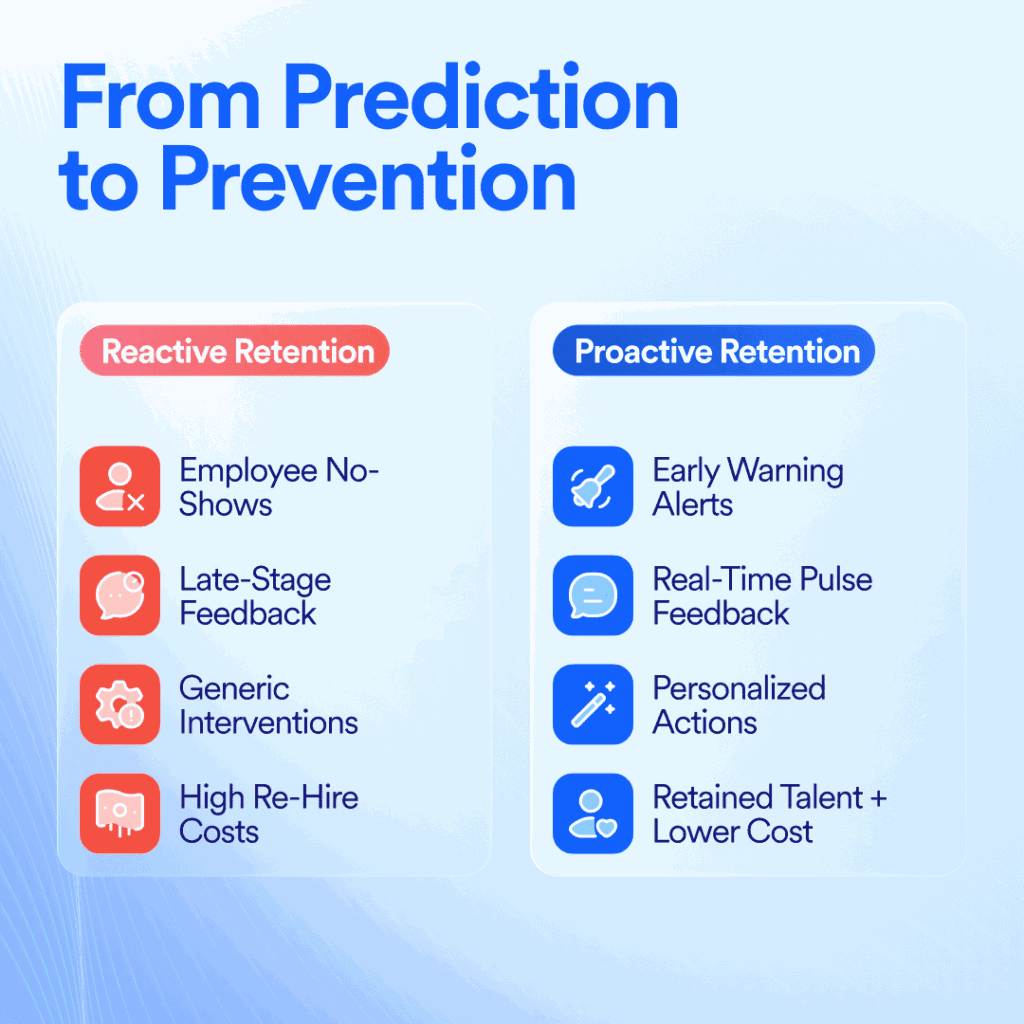
Leading organizations are deploying AI-powered employee retention tools to predict and prevent turnover before it happens. Here’s how agentic AI systems work and the impact they’re already having:
• Early Attrition Risk Alerts: Agentic AI analyzes engagement signals – from feedback surveys to attendance and performance data – to identify at-risk employees. When patterns shift, such as a reliable worker missing more shifts or showing disengagement, managers are alerted.
• Personalized Interventions at Scale: The AI system doesn’t just report risks – it suggests tailored actions such as schedule changes, coaching, or recognition. For example, if Pulse survey results indicate that inconsistent scheduling is driving dissatisfaction, the system flags the issue and recommends specific corrections.
• Proven Reduction in Turnover: Companies using predictive retention tools are seeing real results. McKinsey reports that AI-driven interventions have driven a 30% decrease in turnover in frontline roles. IBM also found a 25% reduction in first-year attrition among companies using AI for talent management, along with a 35% improvement in quality-of-hire.
Enhancing Onboarding and Engagement with Agentic AI
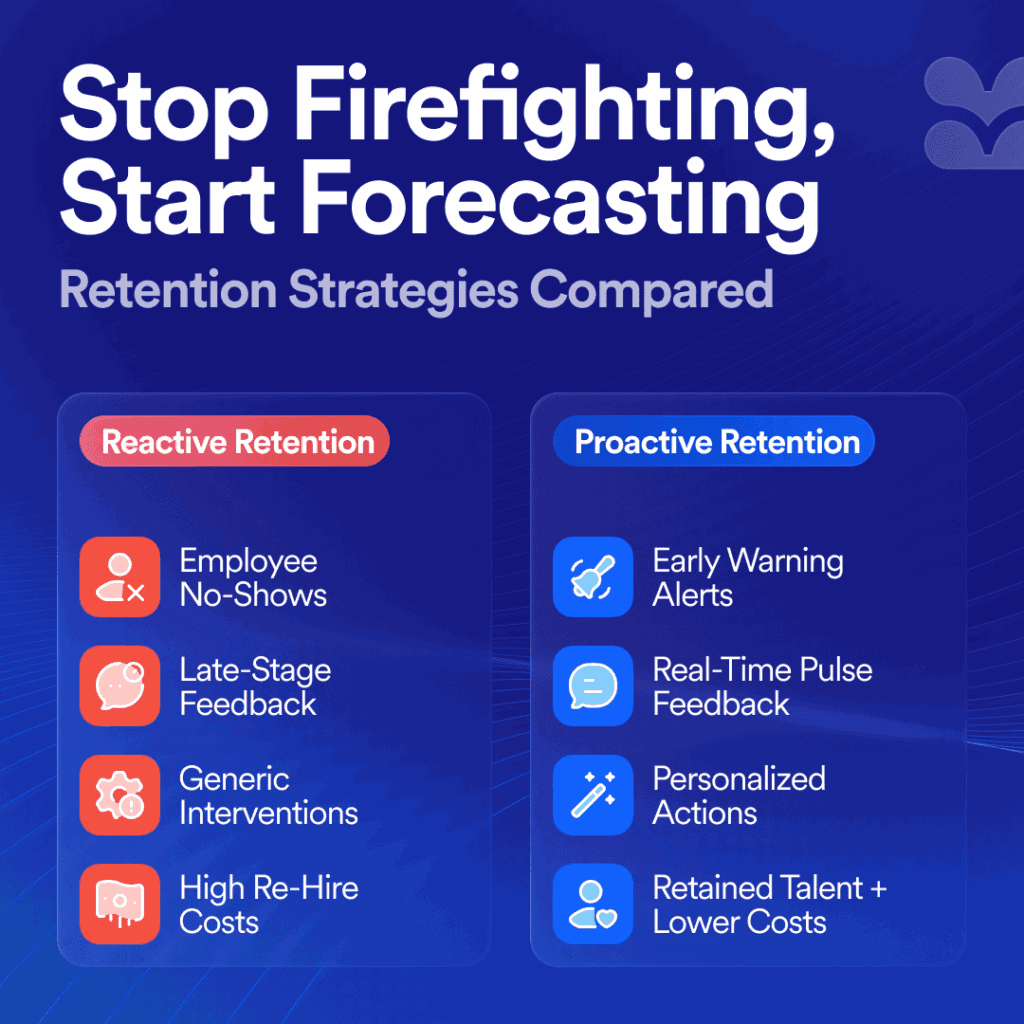
Retention starts on day one. That’s why leading employers are using agentic AI in onboarding and employee engagement to create a better first experience– and ongoing support – for frontline workers.
• Faster, Smoother Onboarding: Agentic AI automates compliance tasks, document processing, and training workflows. According to BCG, AI can now automate more than 50% of onboarding tasks, and some employers have seen an 88% reduction in contract processing time, saving 12,000+ hours annually. One company reported a 22% increase in onboarding satisfaction after deploying agentic onboarding tools.
• “Pulse” Engagement Checks: Agentic systems send out micro-surveys at milestones like Day 1, Week 2, and Day 30. AI analyzes this feedback to surface patterns and recommends actions. If multiple workers in a region cite burnout, the system routes this insight to HR or operations leadership along with suggested fixes. In one use case, identifying a recognition gap through feedback led to a 25% improvement in employee satisfaction.
• Always-On Support: AI-powered virtual assistants can resolve 70% of HR help desk tickets without human escalation, according to SHRM, freeing up HR teams while delivering faster answers to frontline workers. This level of real-time engagement improves trust, satisfaction, and ultimately, retention.
90-Day Action Plan: Start Small, Win Big
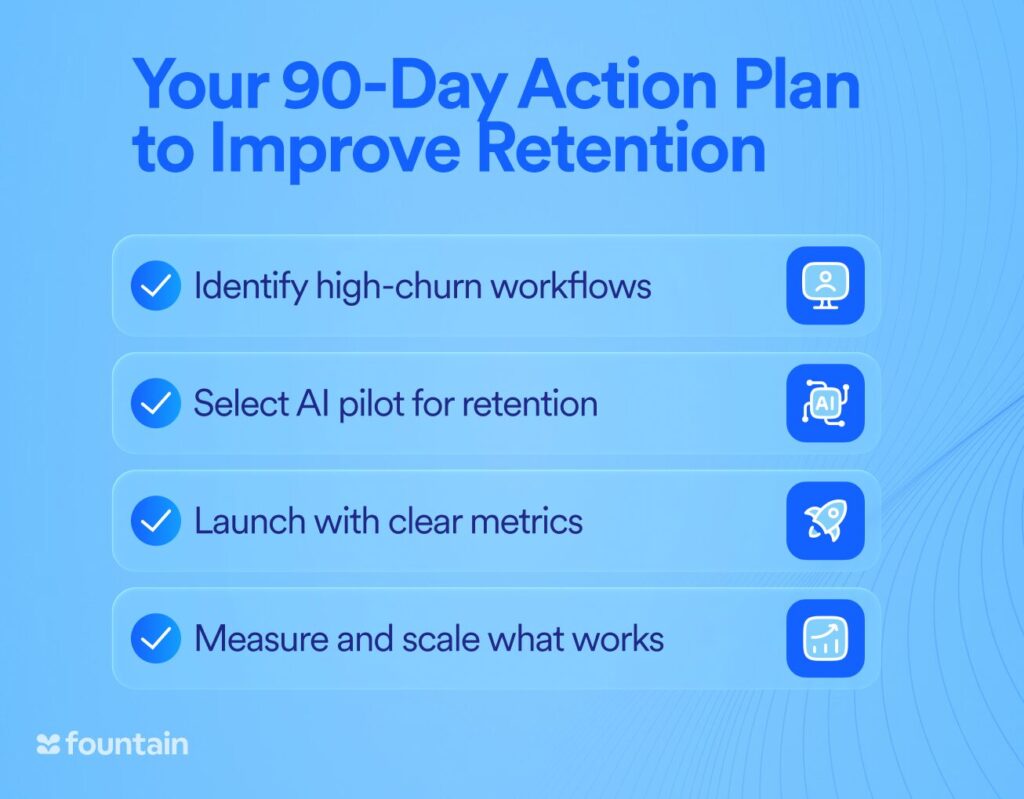
Here’s how organizations can deploy agentic AI to improve frontline retention in just 90 days:
1. Identify a High-Impact Pain Point: Begin by identifying where turnover is most painful – new hire attrition? Specific shift roles? Start there.
2. Select an AI Pilot: Choose a solution aligned to that challenge – e.g., an AI recruiter, a scheduling agent, or a pulse engagement tool.
3. Implement + Track: Run the pilot with defined KPIs (time-to-hire, satisfaction, drop-off rates). Gather insights and manager feedback throughout the process.
4. Scale What Works: Use results to make the business case for broader adoption. Continue refining based on the insights gathered.
Why It Matters
Turnover among frontline workers isn’t just an HR issue—low engagement is costing the global economy $8.9 trillion per year. High attrition also undermines productivity, culture, and customer service. With agentic AI, HR teams are finally equipped with intelligent, proactive tools to reverse this trend. Companies can act earlier, support employees better, and hold onto the talent that keeps their businesses running.
The results speak for themselves. As detailed in our white paper, companies using agentic AI are speeding up hiring by 30–50%, easing recruiter workloads by up to 70%, and seeing turnover drop by as much as 30%.
The opportunity is real, and the tools are ready. Organizations can start small, move quickly, and retain the people they’ve invested so much to bring on board.

